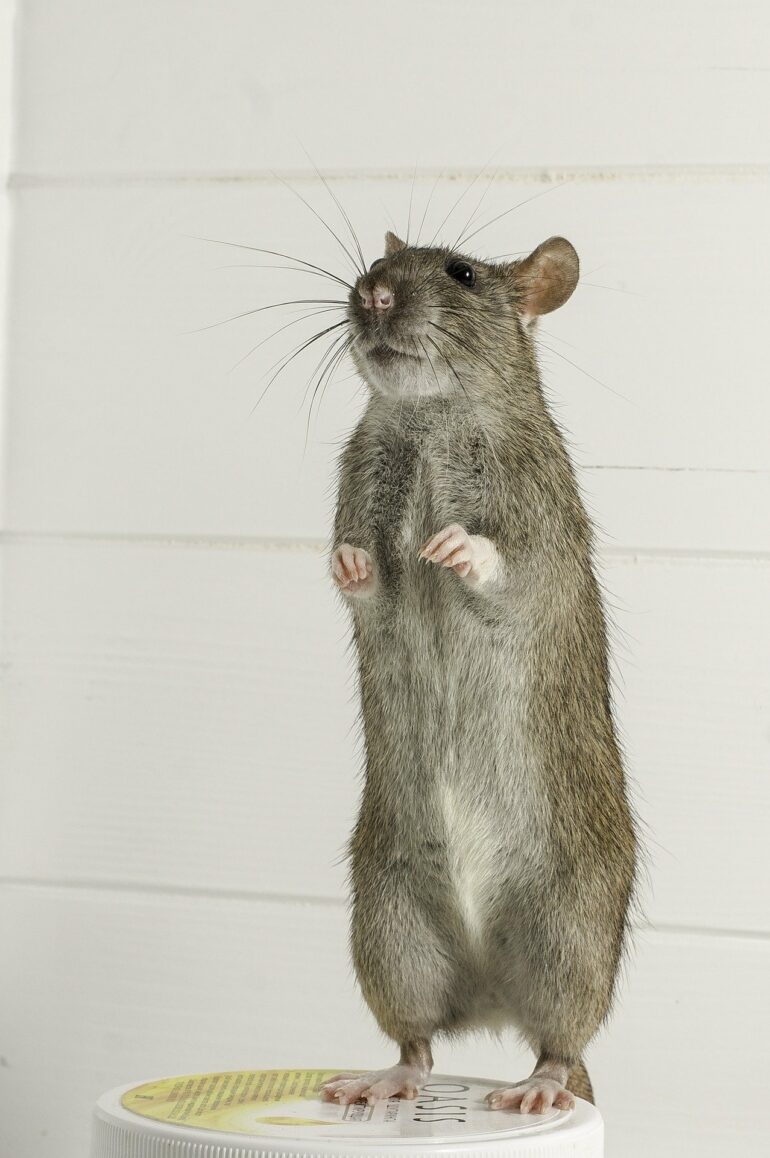Scientists have debated the purpose of the ultrasonic vocalizations (USVs) produced by rodents since the discovery of these sounds in the 1950s. There’s a wide research consensus suggesting USVs are a form of social communication, a courtship display, which though inaudible to humans, might otherwise be compared to the calls of certain birds.
But a University at Buffalo expert in bioacoustics proposes in an article published in the journal Neuroscience & Biobehavioral Reviews that rodents aren’t vocalizing to whisper sweet nothings, but rather to shake up their surroundings in ways that influence how inhaled particles enter their noses, suggesting that rodents use sound to enhance their sense of smell.
“This phenomenon has never been observed before, or I believe even suspected, in any animal,” says Eduardo Mercado III, Ph.D., a professor of psychology in the UB College of Arts and Sciences. “They’re creating new pathways of information by manipulating their environment and controlling the molecular interactions of particles around them.”
They’re not flirting; they’re surveying their surroundings, he says. It’s a radically different process and the findings could have far-reaching implications ranging from the development of treatments for psychological disorders; to better understanding the evolutionary drivers of many cognitive processes; to technological advancement.
“It’s so far off the scale of what we know that it’s like we’re observing ‘Jedi’ rats,” says Mercado. “It almost seems like magic.”
But why did Mercado start looking for something that had never been assumed possible?
His background studying humpback whale song led to an invitation to a meeting on USVs. Reviewing existing research, Mercado found inconsistencies in rodents’ vocal behaviors that didn’t fit with the idea that USVs help males entice females.
Rodents explore their environment by stroking surfaces with their whiskers, visually scanning, and incessantly sniffing. Mercado discovered that studies on vocalizations that also monitored sniffing showed that rodents immediately sniffed after producing each USV.
“That could be a coincidence, or it might suggest the two are functionally related,” he says. “I knew that techniques for using ultrasound to manipulate particles are used in the field of vibroacoustics and thought immediately that might also work for animals.”
Vibroacoustics, or artificially produced ultrasonic vibrations, cause airborne particles to cluster, leading Mercado to suggest that rodents are using USVs to create odor clusters enhancing the reception of pheromones (chemical signals), thus making it easier for the vocalizer to detect and identify friends, strangers, and competitors.
Researchers use rodent vocalizations, particularly those of rats and mice, as a model for studying a variety of human disorders, especially those related to communication, social behavior, and emotional processing, including anxiety and depression, schizophrenia, Parkinson’s disease, and autism. If tests confirm Mercado’s hypothesis, researchers will have to reevaluate findings from these studies.
“Rodents are at the forefront of biological research,” says Jessica Zhou, a student researcher at Harvard University, and the paper’s co-author. “Rodents, especially rats and mice, are the unsung heroes of the scientific world.”
From an evolutionary perspective, there is evidence suggesting the sense of smell used in exploration drove the evolution of more sophisticated cognitive processes, including attention and memory.
“Understanding this system might help us discover how it all started,” says Mercado.
And that understanding can also lead to new technologies, just as understanding vision in nocturnal animals contributed to the development of night vision goggles.
“The fact that we were oblivious to anything like this being possible means we don’t have the understanding yet for how nanoparticles might be sonically manipulated for complex uses,” says Mercado. “But we might have a pretty big head start if we confirm that nature has already solved the problem for us.”
More information:
Eduardo Mercado et al, Do rodents smell with sound?, Neuroscience & Biobehavioral Reviews (2024). DOI: 10.1016/j.neubiorev.2024.105908. linkinghub.elsevier.com/retrie … ii/S0149763424003774
Provided by
University at Buffalo
Citation:
Study suggests that ‘Jedi’ rodents remotely move matter using sound to enhance their sense of smell (2024, October 14)



